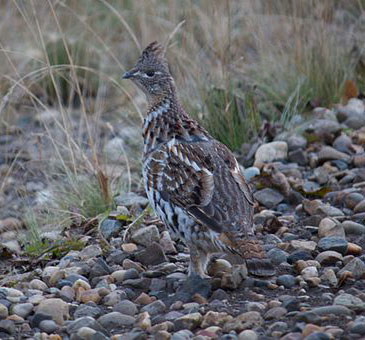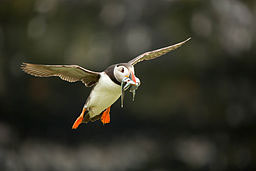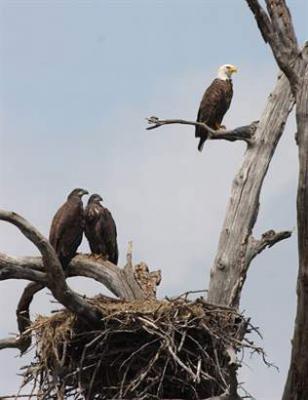Armchair Birding
Peering into nests and feeders, a story of addiction
With a flurry of wings, a ruffed grouse sends the pine siskins and evening grosbeaks scurrying. It settles into the feed tray full of seeds, and tucks into dinner. I am watching intently, fascinated.

I have had only quick glimpses of ruffed grouse, Pennsylvania's state bird, out in the wild. Now, here one is live and huge right before my eyes. This grouse is not in the woods near my home or even near me at all. It is about 14 hours and 860 miles away in Manitouwadge, Ontario at the feeder of Tammie & Ben Haché, being recorded live with a video camera and streamed online. I am sitting in front of a monitor in my warm office, coffee cup in hand.
From this same perch, I have watched peregrine falcons mate, bald eagles feeding their young, and Atlantic puffins dozing in a patch of sun.
While we often besmirch the Internet as a wasteland of vapid and time-sucking "content," there are some great educational and entertainment opportunities out there. The people and organizations associated with nature studies and education are seizing the opportunity to bring the natural world into our lives through our world's most popular conduit. Wild bird and animal cams are flourishing on the web. A connection can give you unprecedented views into the doings of birds, bears, seals, coral reefs, and much, much more; all live in HD (depending on the quality of the equipment used).
In the bird world, two types of cam-watching prevail: feeder cams where you can watch the comings and goings of hungry birds, and nest cams where viewers can peer into the intimate world of bird families. Last spring, thousands of addicted Internet cheerleaders watched as two bald eagles in Pittsburgh set up housekeeping. They were on "hatch watch," then cooed over the tiny new chicks, watch enrapt as parents brought in prey to feed them, then rooted on the fledglings as the made their first forays out into the world. People shared their observations, questions and emotions in chat rooms and Twitter groups associated with the cam. This spring, we'll do it all over again. You can, too.

Other favorite cams are the ones placed on Seal Island in the Gulf of Maine by Audubon's Project Puffin. They aim their lens on those clowns of the bird world, Atlantic puffins. If you want to peer into a puffin burrow to follow the growth of a chick, or watch the "loafing ledge" where puffins hang out with others of its ilk, like razorbills, murres and guillemots, go here. Once there, you can also check cams in tern nesting sites and seals colonies
This is wholesome voyeuristic pleasure, with one big caveat. Nature can be cruel sometimes. Animal cam viewers have watched in horror as that little ball of fur or feathers they've grown attached to succumb to predators or bad weather. Typically, the cam administrators do not intervene, letting nature take its course. This can be a real downer, especially for youngsters but it provides a good lesson in our inability to control everything.
If you want to watch with me for the ruffed grouse to show up on the Ontario FeederWatch cam, go here. You will also find a nice array of other feeder and nest cams to view. Most nest cams in North America are offline right now and will get going again in the spring nesting season. If the meantime, most sites offer photo and video highlights from previous seasons, sometimes better than watching the live cams themselves.
Here is a selection of other sites to visit, but they are only the tip of a very large iceberg, so be sure to do your own exploring:
A direct link to a video of last year's Atlantic puffin chick in the burrow.
Feeder and nest cam links (and lots of other animal cams here, too) at Animal Planet.
A big selection of animals and fish cams from the Explore.org website.
Nest cams from the National Aviary in Pittsburgh (including two peregrine falcon cams)
Links to international cams at the View Nesting Birds website
Watch California condors in the breeding enclosure at the San Diego Zoo
On some of these sites, mostly the commercial ones, you will have to endure advertisements before or even during your cam watching experience. Place like the National Aviary and Cornell sites are free of ads. Many non-profit sites do ask for donations, though, so if you are so inclined, consider a gift. Everyone knows addiction is not cheap.
Mary Birdsong openly admits her addiction to feeder and nest cams and thinks a support group may be in order (can only meet when the cams are inactive). If you've got something to say about this, contact her at mbirdsong@eriereader.com or find her on twitter at @marygbirdsong.


.png)
